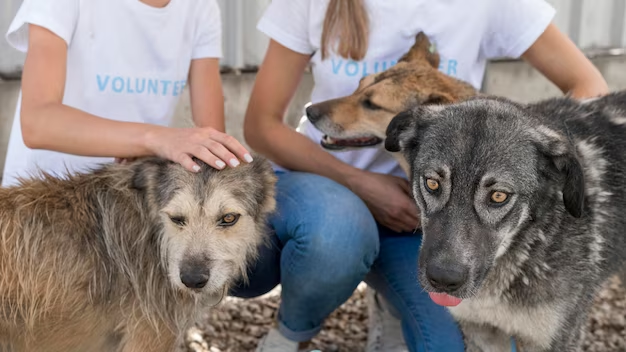

Animals are one of the best parts of the world around us. Not only do they bring variety to our surroundings, but they can also be great companions and awesome ways to connect to the natural world.
Unfortunately, not every animal gets an easy life. If you want to give back to your community while getting to work with cute animals and help them grow and heal, it’s time to check out animal volunteer opportunities.
These are the top ways to find them and how to tell if they’re the best fit for you.
What Animal Volunteering Suits You Best?
Animal volunteering is a blanket term used to cover countless different forms of volunteering and animal care. This could mean you’re helping feed baby squirrels that were knocked out of their nest or that you’re fostering a dog that’s struggling to find the right home after having a rough life.
Consider what types of animals you’d like to work with, what you can handle when it comes to time and work, and what interests you most. Everyone is different. However, not everyone knows the proper questions to ask a veterinarian while job shadowing: they can be incredibly interesting to the right person.
What You Should Expect At Any Organization


When you’re shopping for which volunteer opportunity you want to take on, it’s a good idea to stop and look at the organization itself rather than just the work you’d do. Are they organized? Do they have good reviews from previous volunteers? Do you know how long they’ve been working?
“Choose a shelter that prioritizes the well-being of animals, has a thorough adoption process, provides medical care and socialization, and maintains a clean environment.” – Kathryn Goodwin, El Paso Animal Shelter.
If they’re a newer organization, this doesn’t necessarily mean it’s a bad one, just that there are going to be growing pains, and you’ll be there for that as a volunteer. If you have previous work experience with managing or fundraising, you’ll be able to help them build this from the ground up, which can be exciting.
If you’re less experienced or simply just want to show up for your volunteering hours and then go home, it’s better to look for a more established organization.
Check Out Social Media
Social media is one of the best ways to find local animal volunteer opportunities! From shelters that need fosters to groups that require hands to feed or clean animals and even environmental clean up to help wildlife, there are countless things you’ll find on local pages.
The best sites for this are NextDoor, Craigslist, and Facebook. Each of these gives you the opportunity to seek out people in your area and build connections with organizations.
Word of Mouth is Powerful
If you’re still struggling to find the right animal shelter to volunteer at, let the people in your life know. They may have connections or know someone who volunteers already.
Word of mouth lets you get in touch with people or organizations that someone in your life already knows, adding pressure for them to be the right choice for you.
Interview Your Potential Fits
Although you can definitely start with an organization site unseen: it’s better to do your research. Talk to people running the organization and to volunteers, and get a feel for whether or not this is the right role and company for you.
You don’t want to volunteer for something that’s going to be bad for your mental health or leave you unable to handle working your regular job or spending time with loved ones. Ask if you can job shadow for a shift to see what a regular volunteer should expect.
Remember to Set An Easier Schedule to Start
Most volunteering opportunities will ask you what days you can come in and what hours, but it’s important to start small. One shift a week, no longer than five hours, is a great way to dip your toes and figure out if this is right for you. Avoid going gung-ho and volunteering multiple days in a row when you first start.
Although you may feel good initially for giving back so much, it’s going to exhaust you and leave you burnt out in the long run. Taking it slow means you’re far more likely to keep returning and doing the hard work.
How to Spot a Bad Shelter Choice
You may be inclined to think that any volunteering opportunity is a good one, but it’s vital that you stop and think about your options. Look at how organized they are, how well cared for the animals are, what communication is completed between those running it and the volunteers, and if the volunteers seem to actually like what they’re doing.
A bad shelter is a place where you won’t want to spend more than a couple of minutes and isn’t somewhere you should volunteer for hours at site unseen.
Everyone Should Give Back to Their Community!
If you’re eager to give back and help wildlife while you’re at it, you’re not alone! Take the time to look into local veterinarian job shadowing, or check out shelters that would be excited to have your help.
